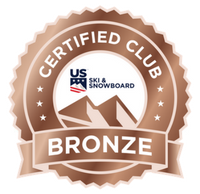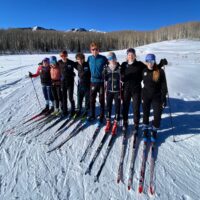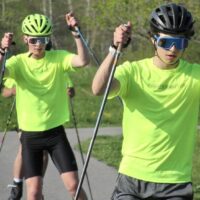A Japanese apprentice spends six years studying a specific craft under their master. Often, not a word is spoken to the apprentice for the first two years…everything is based on observation and careful thought. The apprentice is simply given a broom and told to sweep up the shop, meaning they are always in close proximity to the craft. For 700 days or so, the apprentice sweeps whilst keeping a keen eye on the master at work.
Once it’s time for the apprentice to take their next step in a particular craft, words of guidance are not necessarily uttered…if the apprentice has been paying attention, the lessons have already been learned. Or they haven’t.
All this comes from an interesting article about Japanese boat building published in Seven Days last week.
It’s fitting that this article came out during the spring lull between training seasons. Over the past few weeks, rather than skiing or running sessions, I’ve been meeting with athletes to reflect on the past season. We discuss what went well, what didn’t, goals for the future, short-term and long-term ideas, and more.
As an athlete I was always thinking of these meetings from a technical point of view…
Did my coach think my technique improved this year?
How many hours should I try to train next season?
Should I try a new brand of ski or pole?
As a coach, too, these topics are often easy starting points because there are often answers that are either concrete, or easy to find with data or patterns.
But over many years of spring planning sessions (and given the structure of our club) I’ve come to appreciate these meetings as a rare time to talk beyond just literal “training” stuff. MNC doesn’t have every athlete attending every training session, and in some cases we see some athletes only once every week or two. We don’t have an indoor space other than the Walker Building, where there’s always energy moving from one thing to the next. “Office hours” do not exist for me in a traditional sense. Training camps are only attended by a handful of athletes at a time, though they do provide the necessary non-training downtime for coaches and teammates alike to get to know each other better.
During these spring meetings I’ve tried to not only talk logistics and numbers, but delve into topics that can’t always be manipulated by training hours or technique video. No skier is a robot. While I’m often impressed with the amount of hard work and physical strain members of this team can put themselves though, I’m more amazed at the mental fortitude and psychological adaptability of this group. We have a team that thinks deeply about sports, friends, teammates, challenges, successes, and failures.
I’ve referenced before the words of a former athlete’s parent, who I often heard reminding his youngest child to “listen twice as much as you talk.” That seems in the same vein as this silent apprentice methodology. In these meetings I’m often finding myself getting carried away babbling about my interpretations of attitudes or impacts, and I try to catch myself. When our MNC athletes talk about important subjects, they have tons of great things to say. Enough so that I started jotting down some of my favorite quotes and observations right after meetings in order to make sure I’d remember them.
Without any identity attached, here are some really impact quotes and thoughts and goals that our skiers (not me) have brought up…
- If I achieve all my goals across the year, the feeling I’d have is of being proud of what I’ve achieved.
- I want to have a race where I say “holy cannoli, that was awesome,” as in, I couldn’t have pushed harder or done anything differently.
- The concept of going into a race season with a better awareness of what “feeling good” and “racing well” will feel like, and be confident in executing that.
- Use the psychological tools I have to capitalize on my ability to dig deep.
- Have more than one reason I am showing up on the start line.
- When other people around me are stressed before a race, know that I can find humor and a wider view of everything…even if I’m still stressed too.
- Say ‘yes’ to different experiences and trips and activities outside of skiing, to engage with new places and people I’ll be with in the coming year.
- Be a queen (flexible and able to move in different directions), not a pawn!
Our goals are always laid out in a pyramid, with the top representing a tough-but-maybe-attainable goal. That top triangle is pretty small, and that never used to be a problem because it was always just filled with “short-worded” goal such as:
“EHS”
“Top 10 EHS”
“JNs”
“Top 10 JNs”
“NCAAs”
…and so on.
While plenty of our athlete’s goal pyramids still have those targets on them, the smaller spaces are becoming less useful to us. I find myself turning the goal pyramid page sideways in order to use as tiny handwriting as I can muster to scribble a really strong thought from an athlete into the borders of that triangle. And in the course of the season, I bet a lot of those highly performance-based goals are still going to be checked off whether or not they were expressly written onto the page.
I think this is a team far above apprentices ‘sweeping up the shop.’ We are headed into 2023/2024 ready to be the masters of our own skiing.




Comments are closed.